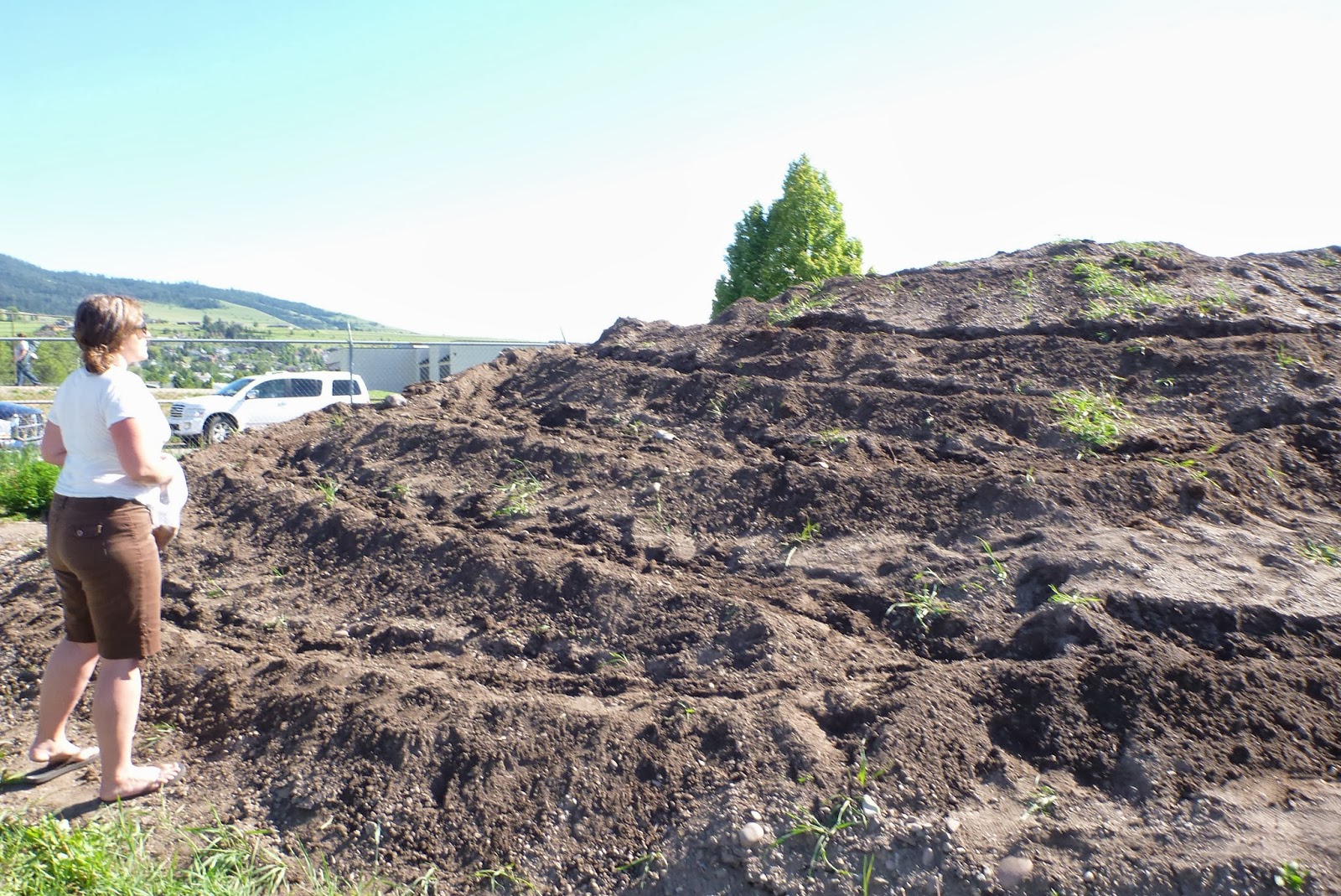 |
| Chris and Heath adding contours to the pile |
Our very good friend Steve E. had these piles created for us for two reasons - privacy and vertical growing space. While both are extremely considerate and forward thinking ideas, we had one problem - water!? At this moment in time, there exists a leak in the pipelines that carry water to this section of the fairgrounds. Due to this minor hang up, we decided to explore drought tolerant plant species.
Why plant anything there at all you might ask. If we consider soil erosion, the causal variables primarily include slope, precipitation, and vegetation. While we cannot really control climatic events (leaving HAARP and cloud seeding out of the conversation), we can manipulate slope and vegetation.
There are two forms of slope control that immediately come to mind - terracing and contouring. One of the best examples of long lasting terracing in the world is Machu Picchu, in Peru; however, we decided to forgo terracing this mound for the time being, given our water issue. We'll discuss terracing further in upcoming blogs this spring, though!
One of the issues with erosion we can witness in traditional agriculture is the formation of rills and gullies. In order to prevent these from forming, farmers are advised to plow with the contour. Permaculture folk have their own alternative to this called a swale and generally will only disturb the soil immediately around the swale versus plowing an entire field along the contour. In the long run, the idea behind both practices is the same - slow the flow of water, allowing it to penetrate into the soil on site rather than flow off the site all together. Thus rainwater is captured more effectively and less reliance on irrigation is needed.
Given the small scale of our mound, we decided to emulate a mixture of the two - we'll call it contour shelving. We started at the top of the mound and spiraled our way back to the bottom, creating a shelf around the mound from top to bottom. We felt confident that the 14 inches of rain Missoula receives in an average year would flow to the shelves and sink into the mound itself. Once we walked the shelves in, we readdressed them with rakes, creating a disturbed surface conducive to seeding.
 |
| Seeding the mound |
How did the first season turn out, you ask? Well, if only we would have performed the work about two weeks earlier, we would have caught the last of spring's plentiful rainfall. As it was, the rainfall after planting was meager at best, dramatically affecting our germination rate. However, that being said, we did have all three species begin to take hold, albeit sparsely. Perhaps the greatest observation came at the end of the growing season - many of the radishes that had taken root grew to fruition and actually produced seed. Overall, while we were unable to outcompete the weeds by dispersing thousands of seed, we were able to gain a foothold on the mound. Having learned from our procrastinate planting last year, we'll be sure to cast more seed this spring before the rains stop! Stay tuned for man vs. mound, round 2!

No comments:
Post a Comment